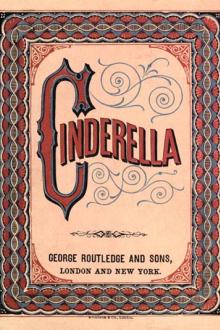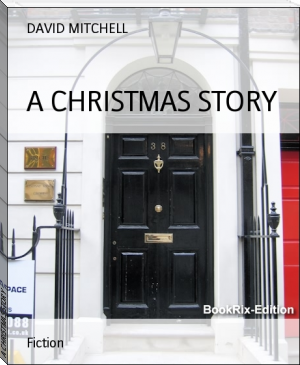Folk-lore of Shakespeare by Thomas Firminger Thiselton Dyer (well read books .TXT) 📕

"Crowdero, whom in irons bound, Thou basely threw'st into Lob's pound."
[16] Mr. Dyce considers that Lob is descriptive of the contrast between Puck's square figure and the airy shapes of the other fairies.
[17] "Deutsche Mythologie," p. 492.
[18] See Keightley's "Fairy Mythology," pp. 318, 319.
It occurs, also, in Massinger's "Duke of Milan" (iii. 2), where it means "behind the arras:"
Read free book «Folk-lore of Shakespeare by Thomas Firminger Thiselton Dyer (well read books .TXT) 📕» - read online or download for free at americanlibrarybooks.com
- Author: Thomas Firminger Thiselton Dyer
- Performer: -
Read book online «Folk-lore of Shakespeare by Thomas Firminger Thiselton Dyer (well read books .TXT) 📕». Author - Thomas Firminger Thiselton Dyer
We cannot dye, how old so e’er we grow.
Of paines and harmes of ev’rie other sort
We taste, onelie no death we nature ow.”
An important feature of the fairy race was their power of vanishing at will, and of assuming various forms. In “A Midsummer-Night’s Dream” Oberon says:
And I will overhear their conference.”
Puck relates how he was in the habit of taking all kinds of outlandish forms; and in the “Tempest,” Shakespeare has bequeathed to us a graphic account of Ariel’s eccentricities. “Besides,” says Mr. Spalding,[23] “appearing in his natural shape, and dividing into flames, and behaving in such a manner as to cause young Ferdinand to leap into the sea, crying, ‘Hell is empty, and all the devils are here!’ he assumes the forms of a water nymph (i. 2), a harpy (iii. 3), and also the Goddess Ceres (iv. 1), while the strange shapes, masquers, and even the hounds that hunt and worry the would-be king and viceroys of the island, are Ariel’s ‘meaner fellows.’” Poor Caliban complains of Prospero’s spirits (ii. 2):
Sometimes like apes, that mow and chatter at me,
And after bite me: then like hedgehogs which
Lie tumbling in my bare-foot way, and mount
Their pricks at my footfall; sometime am I
All wound with adders, who, with cloven tongues
Do hiss me into madness.”
That fairies are sometimes exceedingly diminutive is fully shown by Shakespeare, who gives several instances of this peculiarity. Thus Queen Mab, in “Romeo and Juliet,” to which passage we have already had occasion to allude (i. 4), is said to come
On the fore-finger of an alderman.”[24]
And Puck tells us, in “A Midsummer-Night’s Dream” (ii. 1), that when Oberon and Titania meet,
Creep into acorn cups, and hide them there.”
Further on (ii. 3) the duties imposed by Titania upon her train point to their tiny character:
Then, for the third part of a minute, hence;
Some to kill cankers in the musk-rose buds,
Some war with rere-mice for their leathern wings,
To make my small elves coats.”
And when enamoured of Bottom, she directs her elves that they should—
Feed him with apricocks and dewberries,
With purple grapes, green figs, and mulberries;
The honey bags steal from the humble-bees,
And for night tapers crop their waxen thighs
And light them at the fiery glow-worm’s eyes,
To have my love to bed, and to arise;
And pluck the wings from painted butterflies
To fan the moonbeams from his sleeping eyes.”
We may compare, too, Ariel’s well-known song in “The Tempest” (v. 1):
In a cowslip’s bell I lie;
There I couch when owls do cry,
On the bat’s back I do fly
After summer merrily,
Merrily, merrily shall I live now
Under the blossom that hangs on the bough.”
Again, from the following passage in “The Merry Wives of Windsor” (iv. 4) where Mrs. Page, after conferring with her husband, suggests that—
And three or four more of their growth, we’ll dress
Like urchins, ouphes, and fairies, green and white,
With rounds of waxen tapers on their heads,
And rattles in their hands”
it is evident that in Shakespeare’s day fairies were supposed to be of the size of children. The notion of their diminutiveness, too, it appears was not confined to this country,[25] but existed in Denmark,[26] for in the ballad of “Eline of Villenskov” we read:
No bigger than an ant;—
Oh! here is come a Christian man,
His schemes I’ll sure prevent.”
Again, various stories are current in Germany descriptive of the fairy dwarfs; one of the most noted being that relating to Elberich, who aided the Emperor Otnit to gain the daughter of the Paynim Soldan of Syria.[27]
The haunt of the fairies on earth are generally supposed to be the most romantic and rural that can be selected; such a spot being the place of Titania’s repose described by Oberon in “A Midsummer-Night’s Dream” (ii. 1):[28]
Where oxlips and the nodding violet grows,
Quite over-canopied with luscious woodbine,
With sweet musk-roses and with eglantine:
There sleeps Titania some time of the night,
Lull’d in these flowers with dances and delight;
And there the snake throws her enamell’d skin,
Weed wide enough to wrap a fairy in.”
Titania also tells how the fairy race meet
By paved fountain, or by rushy brook,
Or in the beached margent of the sea.”
In “The Tempest” (v. 1), we have the following beautiful invocation by Prospero:
And ye, that on the sands with printless foot
Do chase the ebbing Neptune, and do fly him
When he comes back—”
Their haunts, however, varied in different localities, but their favorite abode was in the interior of conical green hills, on the slopes of which they danced by moonlight. Milton, in the “Paradise Lost” (book i.), speaks of
Whose midnight revels, by a forest side
Or fountain, some belated peasant sees,
Or dreams he sees, while overhead the moon
Sits arbitress, and nearer to the earth
Wheels her pale course, they, on their mirth and dance
Intent, with jocund music charm his ear;
At once with joy and fear his heart rebounds.”
The Irish fairies occasionally inhabited the ancient burial-places known as tumuli or barrows, while some of the Scottish fairies took up their abode under the “door-stane” or threshold of some particular house, to the inmates of which they administered good offices.[29]
The so-called fairy-rings in old pastures[30]—little circles of a brighter green, within which it was supposed the fairies dance by night—are now known to result from the out-spreading propagation of a particular mushroom, the fairy-ringed fungus, by which the ground is manured for a richer following vegetation. An immense deal of legendary lore, however, has clustered round this curious phenomenon, popular superstition attributing it to the merry roundelays of the moonlight fairies.[31] In “The Tempest” (v. 1) Prospero invokes the fairies as the “demy-puppets” that
Whereof the ewe not bites; and you, whose pastime
Is to make midnight-mushrooms.”
In “A Midsummer-Night’s Dream” (ii. 1), the fairy says:
Swifter than the moon’s sphere;
And I serve the fairy queen,
To dew her orbs upon the green.”
Again, in the “Merry Wives of Windsor” (v. 5), Anne Page says:
Like to the Garter’s compass, in a ring;
The expressure that it bears, green let it be,
More fertile-fresh than all the field to see.”
And once in “Macbeth” (v. 1), Hecate says:
Drayton, in his “Nymphidia” (l. 69-72), mentions this superstition:
In meadows and in marshes found,
Of them so called the fayrie ground,
Of which they have the keeping.”
Cowley, too, in his “Complaint,” says:
And again, in his ode upon Dr. Harvey:
Pluquet, in his “Contes Populaires de Bayeux,” tells us that the fairy rings, called by the peasants of Normandy “Cercles des fées,” are said to be the work of fairies.
Among the numerous superstitions which have clustered round the fairy rings, we are told that when damsels of old gathered the May dew on the grass, which they made use of to improve their complexions, they left undisturbed such of it as they perceived on the fairy-rings, apprehensive that the fairies should in revenge destroy their beauty. Nor was it considered safe to put the foot within the rings, lest they should be liable to the fairies’ power.[32] The “Athenian Oracle” (i. 397) mentions a popular belief that “if a house be built upon the ground where fairy rings are, whoever shall inhabit therein does wonderfully prosper.”
Speaking of their dress, we are told that they constantly wore green vests, unless they had some reason for changing their attire. In the “Merry Wives of Windsor” (iv. 4) they are spoken of as—
And further on (v. 4):
The fairies of the moors were often clad in heath-brown or lichen-dyed garments, whence the epithet of “Elfin-grey.”[33]
The legends of most countries are unanimous in ascribing to the fairies an inordinate love of music; such harmonious sounds as those which Caliban depicts in “The Tempest” (iii. 2) being generally ascribed to them:
Sounds and sweet airs, that give delight and hurt not.
Sometimes a thousand twangling instruments
Will hum about mine ears, and sometime voices
That, if I then had waked after long sleep,
Will make me sleep again.”
In the “Midsummer-Night’s Dream” (ii. 3), when Titania is desirous of taking a nap, she says to her attendants:
And further on (iii. 1) she tells Bottom:
And they shall fetch thee jewels from the deep,
And sing, while thou on pressed flowers dost sleep.”
The author of “Round About our Coal Fire”[34] tells us that “they had fine musick always among themselves, and danced in a moonshiny night, around, or in, a ring.”
They were equally fond of dancing, and we are told how they meet—
and in the “Maydes’ Metamorphosis” of Lyly, the fairies, as they dance, sing:
Thus we dance, thus we dance, and thus we sing a,
Trip and go, to and fro, over this green a,
All about, in and out, for our brave queen a,” etc.
As Mr. Thoms says, in his “Three Notelets on Shakespeare” (1865, pp. 40, 41), “the writings of Shakespeare abound in graphic notices of these fairy revels, couched in the highest strains of poetry; and a comparison of these with some of the popular legends which the industry of Continental antiquaries has preserved will show us clearly that these delightful sketches of elfin enjoyment have been drawn by a hand as faithful as it is masterly.”
It would seem that the fairies disliked irreligious people: and so, in “Merry Wives of Windsor” (v. 5), the mock fairies are said to chastise unchaste persons, and those who do not say their prayers.





Comments (0)